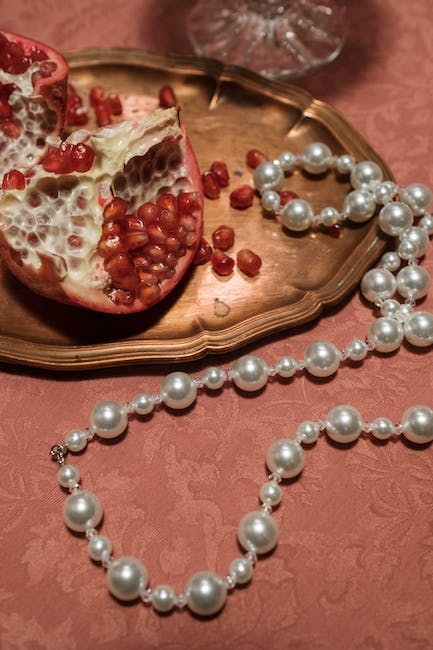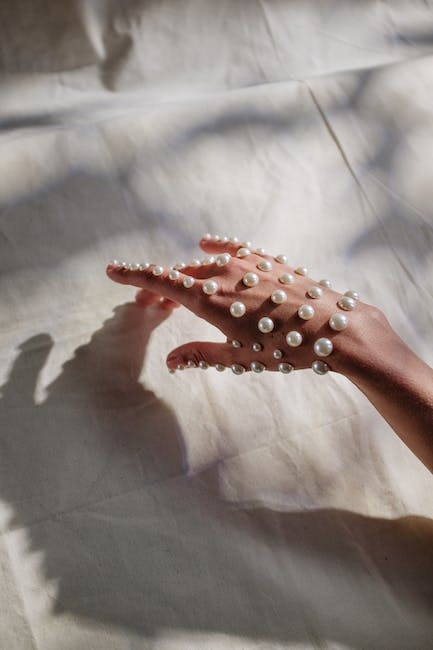Discovering the Delicious World of Tapioca Pearls or Boba
Have you ever tried bubble tea? If you have, then you have most likely tasted tapioca pearls, also known as boba. These small, chewy balls have become a popular addition to drinks and desserts all over the world. But where do they come from, and what makes them so special?
The Roots of Tapioca Pearls
Tapioca is a starch extracted from the roots of the cassava plant, which is native to South America. However, it is also grown in other tropical regions like Asia and Africa. Tapioca has been used as a food source for centuries, and tapioca pearls are a relatively recent invention that originated in Taiwan in the 1980s.
Making Tapioca Pearls
To make tapioca pearls, tapioca starch is mixed with water to form a dough. The dough is then rolled into small balls and boiled until they become translucent and chewy. Sometimes the pearls are dried and then cooked again before being added to drinks or desserts.
There are various sizes, shapes, and colors of tapioca pearls available in the market, with the most common color being white. However, pearls can also be black, brown, or even colored with fruit or vegetable extracts.
Using Tapioca Pearls
Tapioca pearls are used in a variety of dishes and drinks, most famously in bubble tea. But they are also used in puddings, soups, and more. They are popular in many parts of the world, including Asia, North America, and Europe.
Bubble Tea
Bubble tea, also known as boba tea, is a Taiwanese drink that originated in the 1980s. It is made by mixing tea with milk, fruit, or other flavors and adding tapioca pearls to the bottom of the cup. The drink is then shaken to combine the ingredients, creating a tasty and refreshing beverage.
Puddings and Desserts
Tapioca pearls can also be used in puddings and desserts. One famous example is the Brazilian dessert called “pudim de tapioca,” which is made with tapioca pearls, coconut milk, and condensed milk. This dessert is creamy, sweet, and has a unique texture that comes from the tapioca pearls.
Soups and Stews
In some parts of the world, tapioca pearls are used in soups and stews. In India, for example, “sabudana khichdi” is a popular dish made with tapioca pearls, potatoes, and peanuts. This dish is usually served during fasting periods, as it is considered a light and easy-to-digest meal.
Conclusion
Tapioca pearls or boba have become a delicious and popular addition to drinks and desserts all over the world. They have a unique texture and flavor that can add a fun twist to any dish. So the next time you see tapioca pearls on a menu, give them a try and discover the delicious world of boba.
The Bubble Tea Craze: An Introduction to the Sweet and Chewy Drink
Have you ever tried bubble tea? This Taiwanese drink has taken the world by storm, and for good reason. Bubble tea, also known as boba tea, pearl milk tea, or simply bubble tea, is a unique and refreshing beverage that combines tea, milk, sugar, and chewy tapioca pearls. In this blog post, we’ll explore the origins, ingredients, and controversies surrounding bubble tea, as well as some of the reasons why it has become such a popular drink worldwide.
Origins and Ingredients
Bubble tea originated in Taiwan in the 1980s, when a tea shop owner started adding tapioca pearls to his drinks as a fun and novel ingredient. From there, the trend caught on and spread throughout Asia and beyond. Today, you can find bubble tea shops in almost every corner of the world.
The basic ingredients of bubble tea are simple: tea (usually black or green), milk, sugar, and tapioca pearls. The pearls are made from cassava root starch and are boiled until they become soft and chewy. They are then added to the tea and milk mixture, giving the drink its unique texture and flavor. The pearls are often called “boba” or “bubble” because they look like small bubbles floating in the drink.
Customization and Controversies
One of the reasons why bubble tea has become so popular is the ability to customize it with different flavors and toppings. Some popular options include fruit syrups, jellies, or popping boba (small balls filled with fruit juice that burst in your mouth). Bubble tea shops often offer a wide variety of options, allowing customers to create their own unique combinations.
However, bubble tea has also faced some controversies and health concerns. Some people argue that it is too sweet and calorie-dense, as many shops add additional sugar and sweeteners to the drink. Others worry about the environmental impact of the plastic cups and straws used to serve it.
The Bubble Tea Craze
Despite these issues, bubble tea remains a beloved beverage that has introduced many people to the delight of tapioca pearls and the joy of sipping on a cold, creamy, and satisfying drink. In fact, some people are addicted to bubble tea and even have it every day. It is seen as a fun and refreshing drink that can be enjoyed with friends or on the go.
The popularity of bubble tea has even led to bubble tea festivals and competitions around the world. These events celebrate the drink and bring together fans from all walks of life.
Conclusion
Whether you’re a die-hard bubble tea fan or have never tried it before, there’s no denying that this sweet and chewy drink has captured the hearts and taste buds of many. With its unique texture, customizable flavors, and worldwide appeal, bubble tea is here to stay. Just be sure to drink responsibly and consider the impact on the environment.
Discovering the Delightful World of Sabudana: A Popular Ingredient in Indian Cuisine
India is a land of diverse cultures and cuisines, where food plays a significant role in festivals, celebrations, and religious rituals. One such ingredient that holds a special place in Indian cuisine is tapioca pearls, popularly known as “sabudana” in Hindi. Sabudana is a versatile ingredient that is used in a variety of dishes ranging from savory snacks to sweet desserts. Let’s dive into the world of sabudana and explore its culinary and medicinal benefits.

What is Sabudana?
Sabudana is a starchy substance extracted from the roots of the cassava plant. It is processed into small, round, and translucent pearls that are used in cooking. Sabudana is widely consumed in Indian cuisine, especially during religious festivals and fasting periods. It is a versatile ingredient that can be used in a variety of dishes ranging from savory snacks to sweet desserts.
Culinary Uses of Sabudana
Sabudana is a popular ingredient in Indian cuisine and is used in a variety of dishes. Here are some of the popular dishes made with sabudana:
- Khichdi: Khichdi is a popular dish made with sabudana, peanuts, and potatoes. It is a wholesome and nutritious meal that is easy to digest.
- Vada: Sabudana vada is a popular street food in India. It is a deep-fried snack made with sabudana, potatoes, and spices. It is crispy on the outside and soft on the inside.
- Kheer: Kheer is a sweet pudding made with sabudana and milk. It is flavored with cardamom and garnished with nuts. It is a popular dessert during festivals and celebrations.
- Sherbet: Sabudana sherbet is a refreshing drink made with sabudana, milk, sugar, and cardamom. It is a popular summer drink in India.
Medicinal Uses of Sabudana
In addition to its culinary uses, sabudana is also used in traditional Indian medicine as a remedy for digestive problems. Sabudana is considered to be a food that provides instant energy and is easy to digest, which is why it is often consumed during fasting periods. Sabudana is also a source of nutrition for pregnant women and nursing mothers.
Conclusion
Sabudana is a versatile ingredient that has a special place in Indian cuisine. It is a popular ingredient in savory snacks, sweet desserts, and refreshing drinks. Sabudana is also used in traditional Indian medicine as a remedy for digestive problems and as a source of nutrition for pregnant women and nursing mothers. Whether you are looking for a wholesome meal or a refreshing drink, sabudana has something to offer.
Bubble Tea: The Global Phenomenon
Bubble tea, also known as boba tea or pearl milk tea, is a Taiwanese drink that has taken the world by storm. This sweet and refreshing beverage is made with a variety of ingredients, but it is the tapioca pearls that give it its unique and chewy texture. In this article, we will explore the origins of bubble tea, its key ingredients, and its popularity around the world.
The Origins of Bubble Tea
Bubble tea was first created in Taiwan in the 1980s. It was originally called “pearl milk tea” because of the small, white pearls that were added to the drink. The pearls were made from tapioca starch, which gave them their distinctive chewy texture. The drink became popular among young people in Taiwan and quickly spread to other parts of Asia.
The Ingredients of Bubble Tea
The key ingredient in bubble tea is tapioca pearls, which are also known as boba or bubbles. These pearls are made from cassava starch and have a chewy texture. Bubble tea can be made with tea, milk, fruit, or other flavors, and is typically served cold with ice and tapioca pearls. Popular bubble tea recipes include milk tea with black tapioca pearls, fruit tea with colorful tapioca pearls, and matcha latte with white tapioca pearls.
Customizing Your Bubble Tea
One of the great things about bubble tea is that it can be customized to your taste. You can choose different flavors, sweetness levels, and toppings, such as whipped cream, jellies, or fruit bits. Some people even add a shot of espresso to their bubble tea for an extra kick. The possibilities are endless!
The Popularity of Bubble Tea
Bubble tea has become a global phenomenon, with shops and cafes selling the drink in every corner of the world. In the 2000s, bubble tea became popular in the United States, Canada, and Europe, and today it can be found in almost every major city. In fact, there are even bubble tea festivals and competitions held around the world.
The Culture of Bubble Tea
Bubble tea has become more than just a drink it has become a cultural phenomenon. In many parts of Asia, bubble tea shops are a popular place for young people to hang out with friends and socialize. In the United States, bubble tea has become a trendy drink among millennials, with many cafes and shops offering unique and Instagram-worthy versions of the drink.
Tapioca Pearls Around the World
While tapioca pearls are most commonly associated with bubble tea, they are also used in other dishes around the world. In India, tapioca pearls are known as “sabudana” or “sabudane ke dane” and are used in a variety of dishes, including desserts and snacks. In Brazil, tapioca pearls are used to make a popular dish called “tapioca crepes.”
In Conclusion
Bubble tea has become a global sensation, loved by people of all ages and backgrounds. Whether you prefer it with milk or fruit, sweetened or unsweetened, bubble tea is a delicious and refreshing drink that is sure to satisfy your taste buds. So next time you’re looking for a fun and tasty beverage, give bubble tea a try you won’t be disappointed!


Leave a Reply